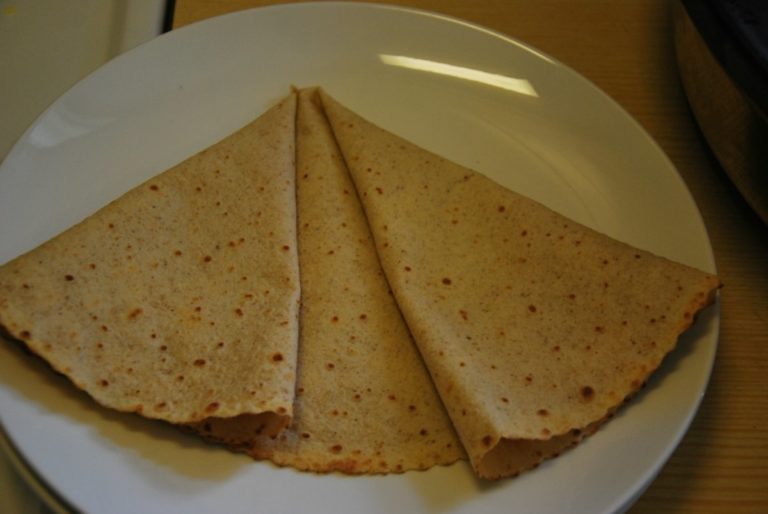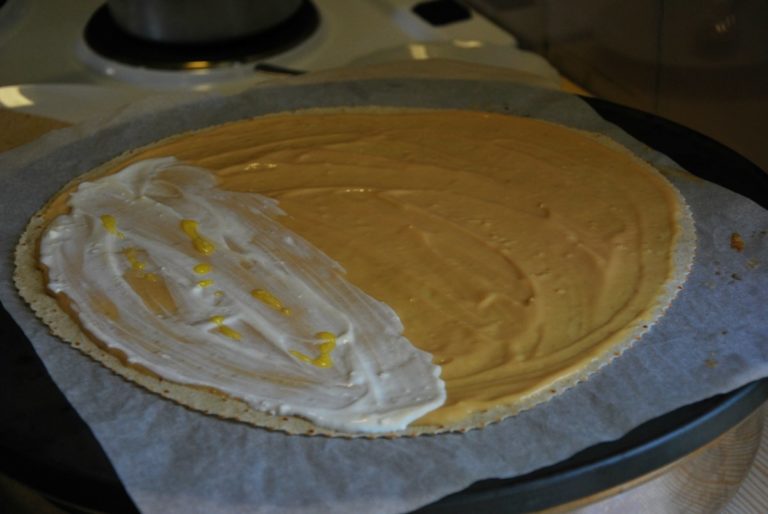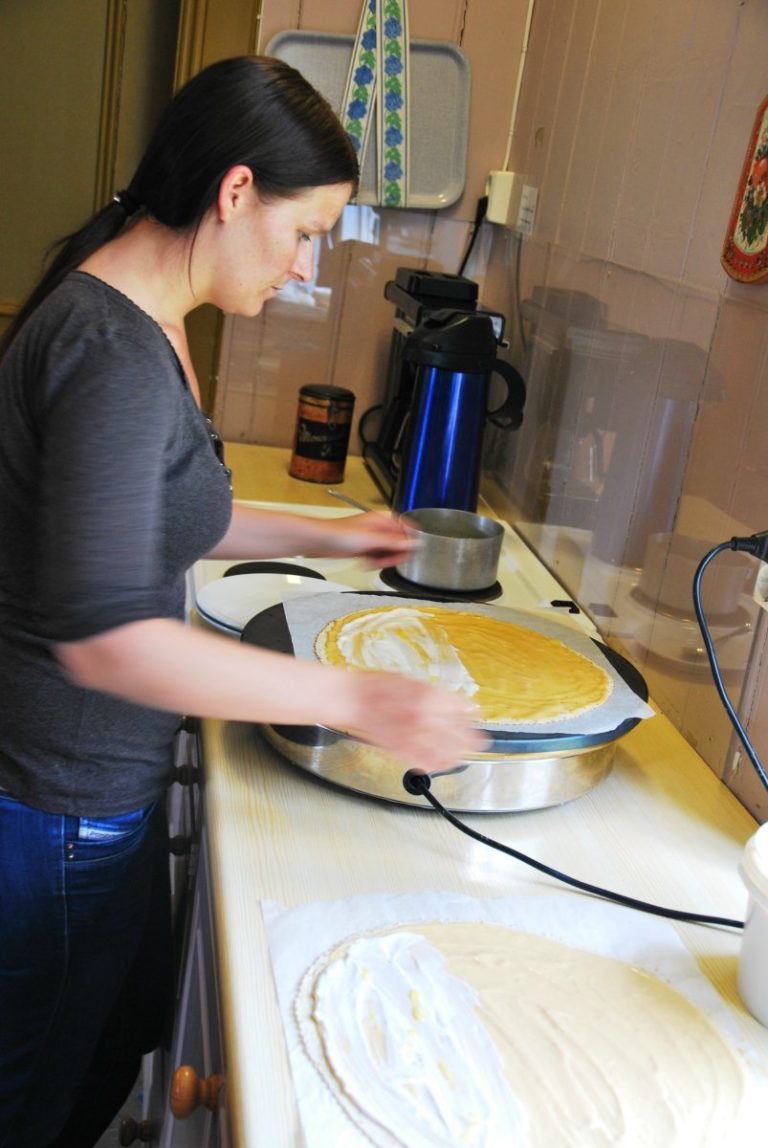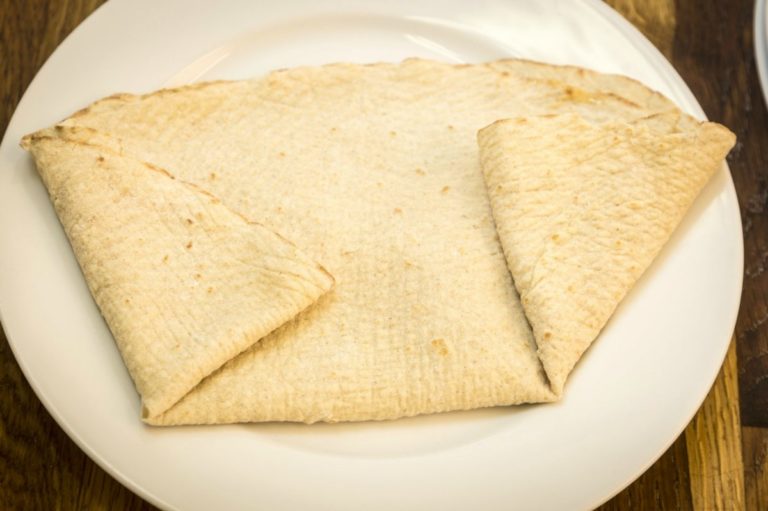Møsbrøm flatbread (Lefse in Norwegian) is a flatbread enveloping a generous helping of rich and delicious møsbrøm, or melted brown cheese. A møsbrøm flatbread is a taste sensation that gives you the energy to explore the beautiful, exciting Salten region.
There are countless varieties of flatbread—thin, thick, white, brown, and sweet fillings ranging from sugar, butter, brown cheese and cinnamon—but after tasting møsbrøm flatbread from Salten, we have to say that this is the very best, an astonishing package of melted brown cheese, sour cream and butter. To find out more, we talked to Anita Vik, an expert on møsbrøm flatbreads who runs the flatbread bakery Lefs-Pia on the island of Engeløya in Steigen. Anita has been baking møsbrøm flatbreads for many years, so she knows more than most about this complex process.
Møsbrøm flatbread started out as a reward for hard work
This flatbread is made from fairly fine flour. It is said to have originated when female bakers travelled from farm to farm, baking huge batches of flatbread. While the bread was still soft and warm, they sliced brown cheese onto it, folded it double, and put it back on the hotplate so that the brown cheese melted to make a warm, sweet reward for a long day’s hard work. The fresh, soft flatbread could also be filled with lamb and drenched in stock, for a rich savoury dish.
Practical information about how to get our hands on some Møsbrøm flatbread
Lefs-Pia cafe is located on Engeløya island in Steigen. To get to Engeløya you can take the ferry from Bodø and Svolvær (buy tickets here) or you can take the bus from Narvik. For the address and contact information for the café take a look at their facebook page and their website.
For all the information you need on not only Engeløya but the whole Bodø and Salten region you can contact or check out of the webpage of Visit Bodo.
Møsbrøm is the brown cheese melted onto the flatbread
Møsbrøm is brown cheese that is melted in milk until it is dark and syrupy. Further south, in Salten, they prefer real goat’s cheese, which has a sharper taste, but Anita prefers cheese made from cow’s milk, which is a little milder. Then a little flour is added, to thicken it. You can sweeten it with syrup, sugar or vanilla sugar. Some people also add a little soured milk to give it acidity, but Anita doesn’t think it’s necessary.
Putting it together requires folding mastery
Start with a warm flatbread, then spread the møsbrøm cheese all over it. Top this with a generous layer of sour cream over half the flatbread, and finally pour over the melted butter. Anita thinks that this is sweet enough, but if people want syrup as well, she doesn’t argue, and lets them pour it over themselves. Then the flatbread is folded. It’s often folded like an envelope, but Anita likes to fold it into a semicircle and then tuck in the edges.
Møsbrøm flatbread used to be a main course
Møsbrøm flatbread used to be eaten as a meal in itself, usually for lunch. A sweet lunch might sound strange to us, but then again, lots of people like porridge or pancakes for lunch. These days møsbrøm flatbread tends to be eaten as a snack with coffee. Some people tear off bits of the flatbread and dip it into the møsbrøm and butter, wiping the plate clean. However, Anita makes neatly wrapped møsbrøm flatbreads and serves them with a knife and fork, which is a lot easier for beginners.
Where to find Møsbrøm
Anita has a lovely café, Lefs-Pia (Pia is local dialect for “girl”) on Engeløya in Steigen. It’s open in July, a few selected Sundays, and on religious and public holidays. The rural museum in Steigen regularly buys her møsbrøm flatbreads, and she also sells 2000–3000 of them at the Bertnesdagan festival, which takes place in Bodø. However, you can find møsbrøm flatbreads in most of the Salten region, from Rognan and Beiarn in the south to Hamarøy in the north, and there is endless discussion about the right ingredients and the right way to fold them. Visitors to the region are most likely to find them in cafés, markets and festivals.






